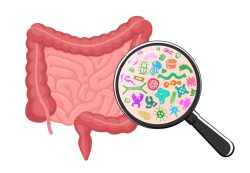Sugar Substitute Linked to Blood Clots and Heart Issues
 Recent research indicates that erythritol, a widely used zero-calorie sweetener in various low-carb and no-sugar products, may elevate the risk of blood clots, strokes and heart attacks. Common in the ketogenic diet, erythritol is utilized not only as a sweetener but also as a thickener in numerous products, including snack bars, baked goods, candy, and ice cream.
Recent research indicates that erythritol, a widely used zero-calorie sweetener in various low-carb and no-sugar products, may elevate the risk of blood clots, strokes and heart attacks. Common in the ketogenic diet, erythritol is utilized not only as a sweetener but also as a thickener in numerous products, including snack bars, baked goods, candy, and ice cream.
Erythritol, which occurs naturally in fruits such as pears, watermelons, and grapes and vegetables, is now processed and is used extensively as a food additive to enhance sweetness and flavor. It is approximately 70% as sweet as sugar, and is derived from fermenting corn or wheat starch.
In the study, 20 participants were divided randomly: 10 drank water containing 30 grams of erythritol, and the other 10 consumed water with 30 grams of glucose. The researchers selected 30 grams as it represents a typical amount found in foods containing erythritol. The results noted that 30 minutes after individuals drank water sweetened with erythritol they exhibited signs of increased levels of proteins that promote platelet clumping in their blood. Out of all the subjects tested it was found that erythritol-sweetened beverages increased clotting risk and alter platelet function. This reaction was not seen by participants who drank water sweetened with regular sugar.
Amidst the rising obesity epidemic, artificial sweeteners like erythritol are more frequently included in soft drinks, diet foods, and various processed items. Health and weight-loss experts commonly suggest it as a sugar substitute for people with high cardiovascular risk factors, including obesity, diabetes, or metabolic syndrome.
Regrettably, erythritol is not efficiently metabolized by the body, leading to its accumulation. Previous studies have indicated that individuals at higher risk for heart disease who had elevated erythritol levels were twice as likely to suffer a major cardiac event within three years compared to those with lower levels.
Recently, the World Health Organization recommended against the use of artificial sweeteners due to lack of evidence that they aid in sustaining weight loss and potential health risks. These guidelines are intended for the general population, excluding individuals with preexisting diabetes. Erythritol is often suggested for diabetic patients because it does not elevate blood sugar and helps prevent cavities and oral health issues.
This study highlights concerns that a typical portion of food or drink sweetened with erythritol could immediately trigger clot formation. Erythritol and other related sugar substitutes, frequently used as alternatives to sugar, warrant further investigation for potential long-term health impacts, particularly as these effects are not observed with sugar.
To view the original scientific study click below:
Ingestion of the Non-Nutritive Sweetener Erythritol, but Not Glucose, Enhances Platelet Reactivity and Thrombosis Potential in Healthy Volunteers



 A team of researchers have examined the role of gut bacteria in developing food addictions and excessive eating habits. They found that certain gut microbiota can lead to the onset of food addiction in both mice and humans, which may cause obesity.
A team of researchers have examined the role of gut bacteria in developing food addictions and excessive eating habits. They found that certain gut microbiota can lead to the onset of food addiction in both mice and humans, which may cause obesity. New research indicates that high levels of added sugars may be more detrimental to metabolic health and early disease onset than any other dietary component. Furthermore, the research revealed that cells appeared more youthful in middle-aged women who included a higher amount of minerals, vitamins, and antioxidants in their diets, compared to those who ate diets with fewer nutrients.
New research indicates that high levels of added sugars may be more detrimental to metabolic health and early disease onset than any other dietary component. Furthermore, the research revealed that cells appeared more youthful in middle-aged women who included a higher amount of minerals, vitamins, and antioxidants in their diets, compared to those who ate diets with fewer nutrients. Aging frequently comes with a variety of comorbid conditions, among which dementia stands out as particularly daunting, given the difficulties in developing effective treatments. In light of these challenges, focusing on modifiable risk factors that could diminish the risk of this ailment presents a more practical strategy. Obesity has been pinpointed as one such factor.
Aging frequently comes with a variety of comorbid conditions, among which dementia stands out as particularly daunting, given the difficulties in developing effective treatments. In light of these challenges, focusing on modifiable risk factors that could diminish the risk of this ailment presents a more practical strategy. Obesity has been pinpointed as one such factor.  According to new research, pesticides, which are chemicals intended to eradicate or control pests like bugs, weeds, and wildlife, could lead to hundreds of thousands of additional cancer cases, particularly in major corn-producing states. The potential link between pesticide use and cancer has long been a concern for scientists and public health experts.
According to new research, pesticides, which are chemicals intended to eradicate or control pests like bugs, weeds, and wildlife, could lead to hundreds of thousands of additional cancer cases, particularly in major corn-producing states. The potential link between pesticide use and cancer has long been a concern for scientists and public health experts. A recent study provides strong evidence suggesting that individuals who eat a diet abundant in whole plant foods may experience slower aging compared to those consuming animal products and highly processed foods. This pioneering research compared the impact of a healthful vegan diet against a balanced diet with meat on the aging process, as gauged by DNA methylation analysis. The study’s methodology, which involved twin pairs, automatically controlled for genetics, age variations, and gender differences.
A recent study provides strong evidence suggesting that individuals who eat a diet abundant in whole plant foods may experience slower aging compared to those consuming animal products and highly processed foods. This pioneering research compared the impact of a healthful vegan diet against a balanced diet with meat on the aging process, as gauged by DNA methylation analysis. The study’s methodology, which involved twin pairs, automatically controlled for genetics, age variations, and gender differences. Many people are now considering chocolate almost like a supplement, believing that their daily intake provides various health benefits. However, your preferred dark chocolate bar might carry a hidden health hazard. Recent research indicates that certain popular dark chocolate items could have alarming amounts of heavy metals, especially lead and cadmium.
Many people are now considering chocolate almost like a supplement, believing that their daily intake provides various health benefits. However, your preferred dark chocolate bar might carry a hidden health hazard. Recent research indicates that certain popular dark chocolate items could have alarming amounts of heavy metals, especially lead and cadmium. Recent data indicate that intensive lifestyle changes can be an effective strategy for early-stage Alzheimer’s, potentially slowing some aspects of cognitive decline. Alzheimer’s disease has a profound impact, bringing about not only memory loss but also a range of other symptoms. These include episodes of confusion and challenges in completing tasks. Moreover, patients may become prone to feelings of irritability and bouts of depression.
Recent data indicate that intensive lifestyle changes can be an effective strategy for early-stage Alzheimer’s, potentially slowing some aspects of cognitive decline. Alzheimer’s disease has a profound impact, bringing about not only memory loss but also a range of other symptoms. These include episodes of confusion and challenges in completing tasks. Moreover, patients may become prone to feelings of irritability and bouts of depression. Recent research has shown that consuming a portion of baby carrots three times weekly can markedly raise skin carotenoid levels. Elevated skin carotenoids are linked to enhanced antioxidant defenses and a reduced likelihood of chronic conditions such as heart disease and various cancers. This indicator also suggests better skin health and enhanced immune system function.
Recent research has shown that consuming a portion of baby carrots three times weekly can markedly raise skin carotenoid levels. Elevated skin carotenoids are linked to enhanced antioxidant defenses and a reduced likelihood of chronic conditions such as heart disease and various cancers. This indicator also suggests better skin health and enhanced immune system function. Healthy eating provides multiple benefits, such as better overall well-being and a more efficient cardiovascular system. According to recent research, consuming the appropriate foods could extend life expectancy by up to ten years.
Healthy eating provides multiple benefits, such as better overall well-being and a more efficient cardiovascular system. According to recent research, consuming the appropriate foods could extend life expectancy by up to ten years.